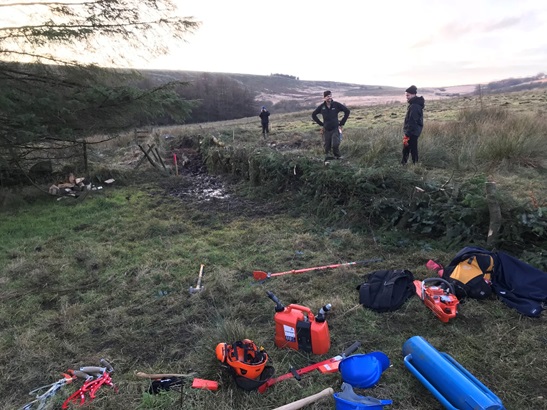Work on a natural flood management scheme is underway on Smithills Estate near Bolton.
Natural flood management aims to manage flood risk to local properties and improve the habitats of the wildlife in the area. Natural flood management involves storing flood water upstream in order to reduce the risk of flooding to communities downstream. Techniques such as restoring peatland, tree-planting, building leaky dams and reconnecting rivers to natural flood plains can all be used to reduce flood risk in the wider catchment.
The Smithills Estate natural flood management scheme is being carried out through a partnership between the Environment Agency and the Woodlands Trust. The project involves storing flood flows upstream on areas of the estate that will enhance the environment through providing habitat, whilst helping to reduce flood risk downstream.
As part of the works so far, a 30m long, 1m high wooden debris dam or ‘leaky barrier’ has been constructed, which is the first of around 100 such barriers that have been proposed for this project. The dams are being constructed using local, felled pine, live willow stakes and brash to infill between the stakes. The project will also involve planting trees to intercept surface water and create habitats.
The leaky barrier on the Smithills Estate has been designed to hold back up to 150m3 of flood water (the equivalent of a double decker bus) and when the scheme has been completed, it will help to reduce the flood risk to around 30 properties downstream in the Smithills community.

Image © Environment Agency